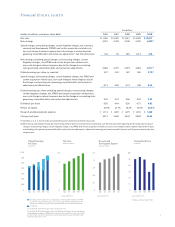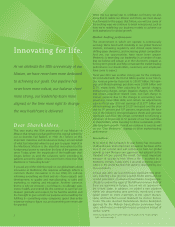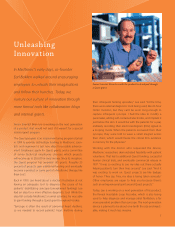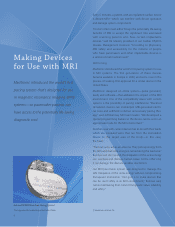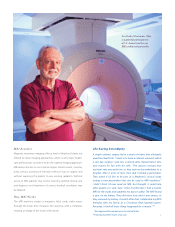Medtronic 2010 Annual Report Download - page 15
Download and view the complete annual report
Please find page 15 of the 2010 Medtronic annual report below. You can navigate through the pages in the report by either clicking on the pages listed below, or by using the keyword search tool below to find specific information within the annual report.
“Before I started using Medtronic surgical navigation tools
during spinal fusion surgery, I would close up the patient
and then do a CT scan after surgery to see if the screws were
placed in the right location,” said Dr. Lawrence Lenke,
Professor of Orthopaedic Surgery at Washington University
School of Medicine in St. Louis, Missouri. “If not, we’d have
to occasionally return to the OR, which was costly and
inconvenient for everyone involved, especially the patient.
“With Medtronic’s surgical navigation systems,” he said, “I
can see the exact location, so I have visual confirmation that
the screws are in the right position.”
Even more important than avoiding a repeat surgery is
avoiding damage to surrounding anatomy, another benefit
of our navigation, imaging, and intraoperative monitoring
tools. “Placing screws accurately in the spine is a huge safety
issue,” Dr. Lenke said. “I’m working within a millimeter of vital
structures, including the spinal cord and nerves exiting from
it, along with large blood vessels directly outside the verte-
brae. I can’t be wrong.”
Dr. Lawrence Lenke, one of the world’s foremost leaders in spinal deformity surgery, uses a Medtronic surgical navigation tool to help him place
screws during spinal fusion surgery.
11


